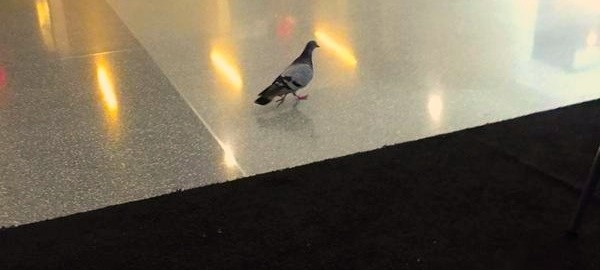Reading in book-related ad tech for the week ending April 17, 2015
April 11, 2015
The rise of messaging: Big 4 messaging app users now equal big 4 social network users. #mobile
April 13, 2015
How the New York Times is becoming a mobile-first company according to Marc Frons, SVP, CIO NYT. (Via Benedict’s Newsletter No. 107) #mobile
90% of attendees at Coachella (600k people last year), use iPhones. Does this tell you more about iPhones or Coachella?(Via Benedict’s Newsletter No. 107) #mobile
“79 Theses on Technology for Disputation.” (Via Alexis Madrigal’s “Real Future”) #metatech
“The Cost of Paying Attention.” Cluttered environments that leave people feeling anxious is neither good for the people we’re advertising to, nor is it good for the products we’re advertising. It’s worth heeding even if (especially because?) this guy is taking aim at the ads that our bread-and-butter. (Via “79 Theses…”) #metatech
“Surveillance as the normative form of care.” And, I’d add, as the normative form of education, marketing, policing, etc. etc. (Via “79 Theses…”) #metatech
Six reasons to advertise in newspapers. For one, print newspapers index much higher for reader engagement and trust. #print
April 14, 2015
The Metropolitan Museum of Art is producing a series of videos in which contemporary artists talk about a piece in the Met’s collection that holds resonance for them. The latest features Nayland Blake talking about a work from Mali: “So much of its meaning as a sculpture is bound up, not in what you can see on the outside, but what it contains within.” #art
What moms want. Mother’s Day discovery tips from Bing researchers. (True, no one uses their search engine, but their research is top notch. Via Click Z’s “De-Averaging Moms” post) #moms #targeting
April 15, 2015
Speaking of surveillance: Is this the location-based advertising we’ve been waiting for? Tracking not just where you’ve been on the Web, but where you’ve been in real-life. #mobile #targeting
Ray Ozzie on what the rise of messaging means for work flow is worth listening to (even if it’s real purpose is to serve up his new app, Talko) #metatech
Native Advertising, by the numbers. #native
The numbers on native mobile ads are (not surprisingly) good: “Research released in October 2014 by Polar showed higher clickthrough rates (CTRs) for native ads run on mobile compared with desktop in the US and UK. Average CTR for native placements on tablets was 0.28%, and smartphones were right behind at 0.27%. Meanwhile, CTR for desktop native ads was just 0.15%.” #native #mobile
April 16, 2015
“Gaming content remains one of best ways to reach young men.” Data from YouTube show how deeply pervasive gaming culture is, and how to reach the market. #gaming #targeting
Why it feels good to hear, read and watch stories, and why podcasts are particularly good at hooking us in. #podcasts
Playlist targeting comes to Spotify. Target readers of health books during their “Workout” playlist, cookbooks during their “Cooking” playlists, how-to readers during their “Cleaning” playlists, and more. #targeting
Everyone wants in on the video ad sales boom, even print magazines. And in a nifty meta-moment, the article about the ad features a video of the magazine playing the video. #wowfactor
Click Z works the numbers on why email remains the workhorse of digital marketing strategy. #email
Business Insider’s shameless with the click bait, but for advertising people these “Best of 2014” digital campaigns are great inspiration. #inspiration









